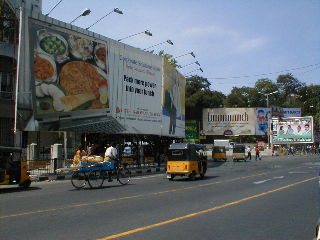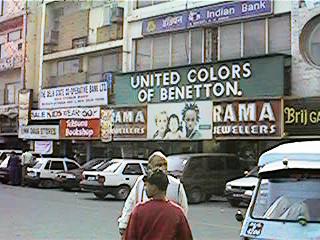
Last update 26 August 2004
 |
 |
 |
| Throughout its historical evolution, India has
witnessed both out-ward as well as inward migration of people. The earlier part
of Indian history is mainly dominated by the inward migration in form of
numerous invasions from Turks, Afghans, Mongolian, followed by Moghals, and
finally British, Portuguese, and French, whereas the later part of Indian
history is mostly dominated by outward migration of Indians and that trend
towards outward migration is still going on. The nature and triggers of outward
migration have changed over the years, now it has spread to more than 110
countries and grown in numbers to become 20 million strong. The perception of Indians towards Diaspora is gradually changing, especially towards the people based in advanced countries. The Indian Diaspora in advanced countries is mostly represented 'brain drain syndrome'. Until recently this was resented in India for its success and lack of willingness to invest back. Indians took a dim view of NRI who have gone abroad; N.R.I. an acronym for non resident Indians became popular in India as 'non required Indians'. In the case of the overseas Indians the feeling of resentment towards India was high and mainly originated from frustrating experiences of government bureaucracy, economic and social stagnation. However, industrial success stories like the IT industry, pharmaceutical and niche automobile suppliers, has changed the perceptions of Indian Diaspora towards India. In recent year, the world has begun to see India differently and so the overseas Indians. |
 |
 |
| In the last decade the government of India
started to realise the potential of Indian Diaspora in the economic development
of the country and felt the need for a formal policy to bring Indians living
abroad closer to India. In 2003 the Indian government launched an annual event
called as Pravasi Bhartiya Divas to establish formal relationship between India
and its Diaspora. The main objective of the event was to understand the
NRIs / PIOs sentiments about India and create a policy framework for a
sustained and productive interaction. Building on the interaction in
Pravasi Bhartiya Divas (India Day) the
Indian government established a Ministry of Non Resident Indian ( NRI) Affairs
to look after the needs of Indian Diaspora. In 2004 Ministry of NRI affairs,
formalising the interactions launched a People of Indian Origin (PIO) scheme
for Indian Diaspora. The PIO scheme gives visa free entry to Indian origin
people living abroad and allows them all the rights enjoyed by Non-Resident
Indians (NRIs) including purchase of non-agricultural land. Initially the PIO
scheme begins with 16 specified countries and will be extended to 70 countries.
The PIO scheme is result of interaction between the Indian Diaspora and the Indian government spread over more than 10 years. The scheme represents an effort from the Indian government to bring the Diaspora culturally closer to their Indian identity as well as motivating this strong resource to play more active role in economic development. |
 |
 |
 |
|
This page contributed by |
 |
Back to homepage for Migration, Identity and New Information Technology workshop